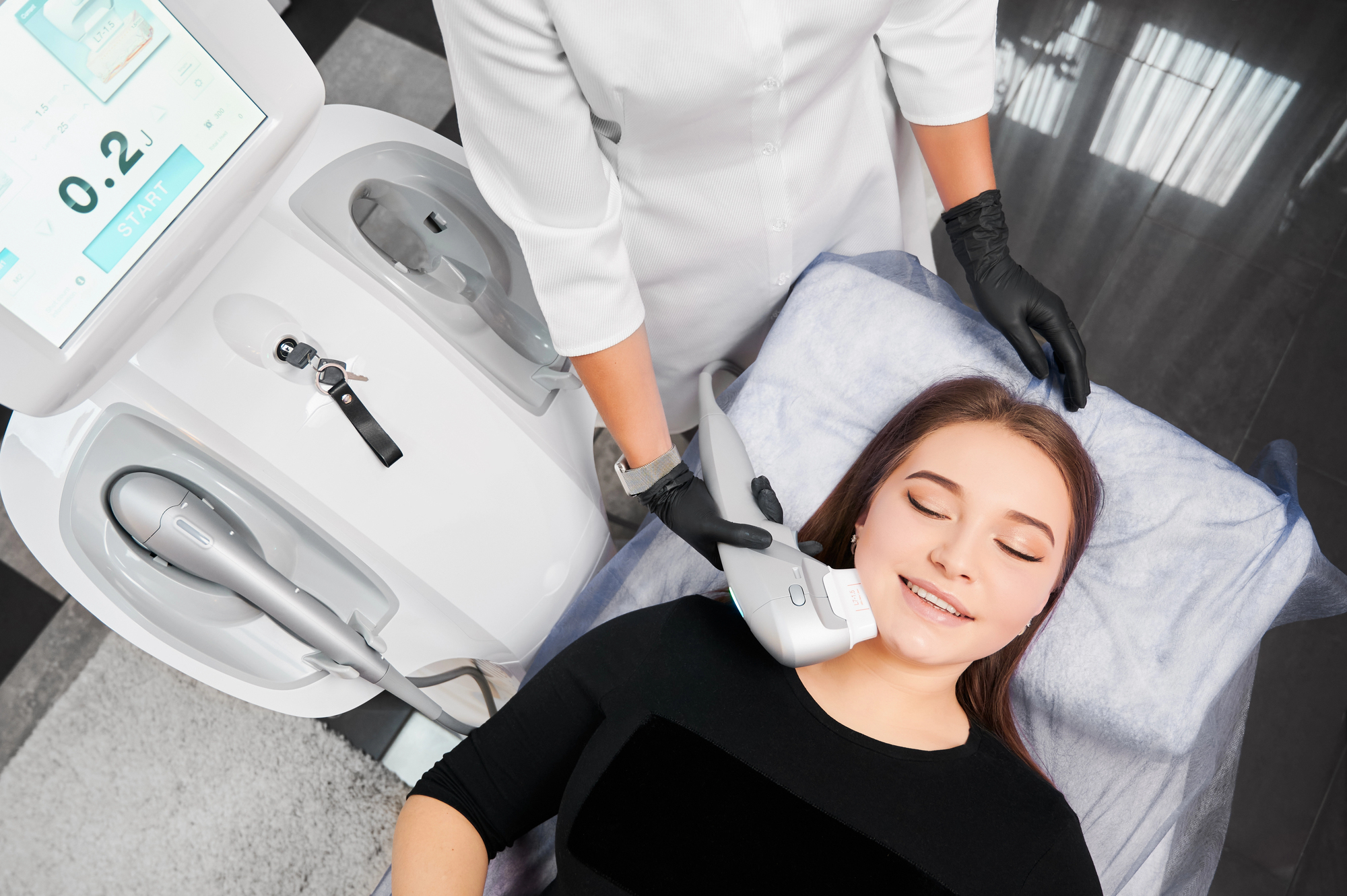Birthmarks
Birthmarks are natural skin markings that can vary in size, colour, and type, appearing anywhere on the body. Discover the different types of birthmarks, their causes, and treatment options to reduce their visibility if desired.


What are birthmarks?
As the name suggests, birthmarks are marks on our skin that have often (though not always) been with us since birth. They can be red or brown or skin coloured and range from very light, to significantly coloured, such as port wine birthmarks. They can appear anywhere on the body. While birthmarks generally do not present any medical concern, they can be significantly troublesome from a cosmetic perspective, especially when found on the face. For this reason, laser treatment is common.
What causes birthmarks?
Red birthmarks are vascular and appear when aberrant blood vessels create areas of redness on the skin.
Brown birth marks are caused when a patch of skin has a different concentration of melanin pigment to the rest of the skin.
Some birthmarks originate from other cells, such as hairy, sebaceous, epidermal or comedonal naevus or lymphatic malformations and can appear as raised growths on the skin.
Treatment options for birthmarks
We have lasers that target either red or brown colour in the skin. Lasers can remove the excess colour without changing the texture of the skin or affect the colour of the surrounding skin. The laser treatment targets the abnormally coloured area and the body will gradually clear away the colouring over time. These lasers successfully significantly reduce the appearance of these birthmarks.
Marks originating from other cells can be treated using ablative lasers, which can greatly improve appearance and symptoms. Laser hair removal can also help remove unwanted hair associated with these lesions.
How many treatments does it take to remove birthmarks?
For most birthmarks, multiple treatments will usually be necessary. All patients wishing to undergo treatment for birthmarks have a consultation with our Dermatologist, to determine the right course of treatment for your skin condition, and to ensure there are no other underlying health concerns which may affect the course of treatment.
Corrective Treatments
Lorem ipsum dolor sit amet consectetur. Aliquam aliquet ultricies erat diam ut lorem nunc mauris vestibulum.
Our Practitioners
The doctors at Neutral Bay Laser & Dermatology Clinic are highly trained medical professionals, with a caring and compassionate outlook, and a commitment to delivering exceptional results for our patients.

Dr. Terence Poon is the medical director of Neutral Bay Laser & Dermatology Clinic. He is a dermatologist and laser specialist. He has trained extensively in Australia and internationally, in the laser-responsive cosmetic aspects of dermatology.
He undertook a fellowship with Dr Jim Walter, who pioneered the use of lasers in dermatology in Australia and who founded our clinic, which was the first full time laser dermatology clinic in Sydney.

Dr Marianne Nolan has been with the clinic for over two decades and is very experienced in all aspects of laser treatments and related cosmetic procedures. Her meticulous record of safety and competence has earned her a huge following of dedicated cosmetic skin care patients, who also enjoy warm, caring manner. She trained extensively with our founder, Dr James Walter, and has attended regular training programmes and conferences in Australia, Europe and the USA. Together with Dr Walter, she is co-developer of our bespoke rejuvenation treatments, the Walter Nolan Multi-Laser Procedures.

Dr Helena Torpinski has been with our clinic for nearly two decades. Her bright and lively manner continues to ensure she is popular with our patients. Helena works as a GP in Newtown when she is not at our clinic and this adds a great breadth of knowledge and understanding to her engagement with patients. She has expertise in all forms of laser and light-based treatments and has a commitment to ongoing education, training and regular conference attendance.














































